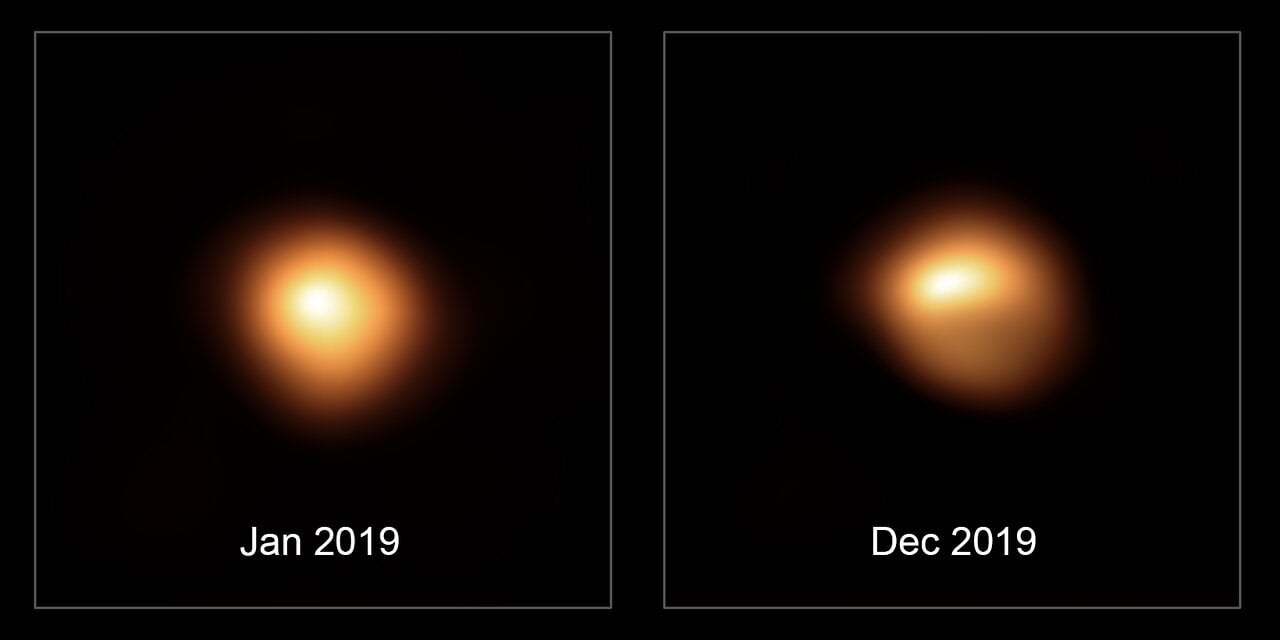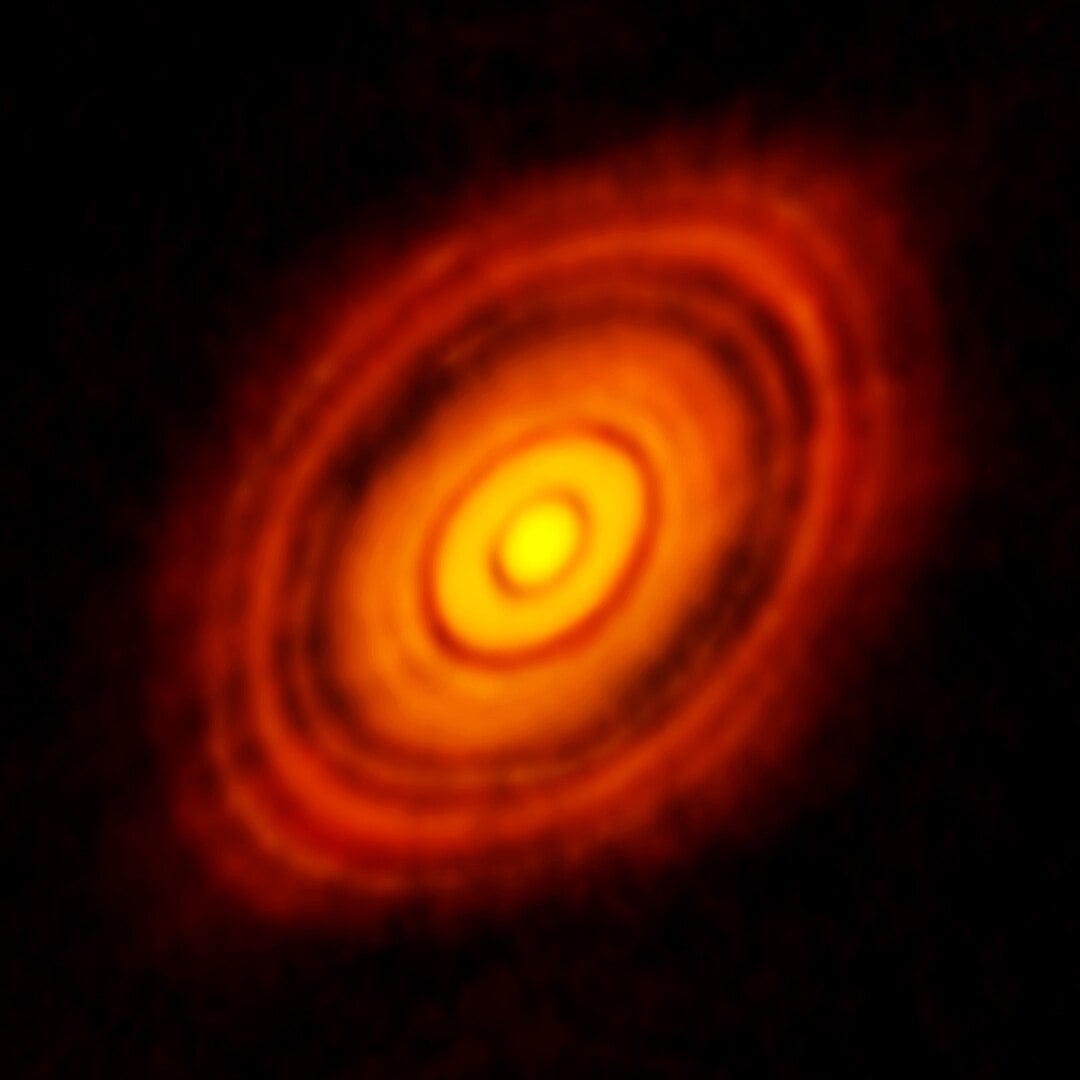Imagine looking up at the night sky and watching a star almost completely disappear, then reappear months later. That's exactly what happened with a distant star called ASASSN-24fw, leaving astronomers scratching their heads for months.
Located about 3,000 light years from Earth, this star pulled off an incredible disappearing trick between late 2024 and early 2025. For eight months, it dimmed by an astounding 97% before returning to its normal brightness. To put this in perspective, imagine a bright streetlight suddenly becoming as dim as a birthday candle.
 It's not unheard of for stars to unexpectedly fade. Comparison of SPHERE images of Betelgeuse taken in January 2019 and December 2019, showing changes in brightness and shape (Credit : ESO/M)
It's not unheard of for stars to unexpectedly fade. Comparison of SPHERE images of Betelgeuse taken in January 2019 and December 2019, showing changes in brightness and shape (Credit : ESO/M)
What made this event particularly puzzling was that the colour of the star's light remained unchanged during its dimming. This crucial clue told scientists that the star itself wasn't changing or dying, something else was blocking our view. After analyzing the data, researchers from The Ohio State University believe they've cracked the case. Evidence suggests it is likely that there is a cloud of dust in the form of a disk around it, according to lead researcher Raquel Forés-Toribio.
This isn't just any ordinary dust cloud though. The disk surrounding ASASSN-24fw is enormous, about 1.3 astronomical units (AU) across, even bigger than the distance between the Sun and our planet. The dust particles themselves are made of carbon or water ice, similar in size to large grains of dust found on Earth.
The mystery deepens further however since scientists suspect this star isn't alone; it likely has a smaller, cooler companion star orbiting nearby, making it what astronomers call a binary system. The second star, which is much fainter and less massive, may be driving the changes in geometry leading to the eclipses, explains Forés-Toribio. This hidden partner could be responsible for stirring up the dust disk, creating the conditions that led to the dramatic dimming event we witnessed.
 Atacama Large Millimetre Array image of the dust disk around HL Tauri (Credit : ALMA)
Atacama Large Millimetre Array image of the dust disk around HL Tauri (Credit : ALMA)
How rare is this phenomenon? Extremely. Chris Kochanek, a professor at Ohio State who co-authored the study, describes it as one in a million eclipsing. Even when researchers searched for similar events in their databases, they couldn't find anything quite like it.
The star was discovered by the All-Sky Automated Survey for Supernovae (ASAS-SN), a network of small telescopes that continuously monitor our night sky. Since its establishment more than a decade ago, ASAS-SN has collected about 14 million images and that keeps going up. Don't expect to see this show again anytime soon. Researchers calculate that the ASASSN-24fw system likely experiences an eclipse about once every 43.8 years, with the next one not expected to occur until around 2068.
This discovery reminds us that the universe still holds countless mysteries. As astronomer Krzysztof Stanek notes, The universe's capacity to surprise us is continuous. Each unusual event like this helps scientists better understand how stars and planetary systems form and evolve, pushing our theories to new limits.
Source : Dusty structure explains near vanishing of faraway star

